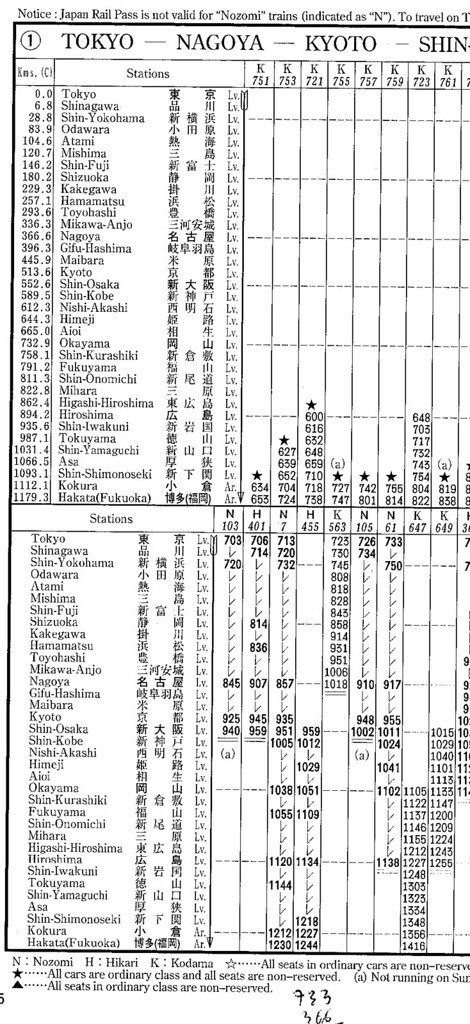In my last trek I forgot my camera. Sketches and notes were the only way to retain landscapes and experiences. I wanted to try the site www.artsteps.com the allows to create online 3D exhibits. This is the result.
Category: Travel
The gaze from a dome
Anyone travelling to Russia or another country where Orthodox church is present will notice the domes on top of the churches. When seen from afar, in some village, or when turning around a corner in a street in Moscow, they appear in our eyes as as fantastic buildings from a fairy tale.
When I went inside, I used to watch the burning candles and the plethora of icons on the walls.
It was not until later that I looked up and found, painted in each cupola, a great face. It could be the image of Christ, the Virgin or another Saint. The effect was very special, as if they were up there, watching us in silence, a gaze serious and serene, but not threatening, as if saying “here I am, if you want to talk, I’ll listen”. The fact that when you enter is not visible immediately, not until you are beneath it and look upwards, and that most of the other visitors ignore them, gives an intimate touch to the experience, as if they were addressing us personally. Since then, when reaching a new church, for every dome-onion seen from outside, I was looking already for a face with a gaze inside.
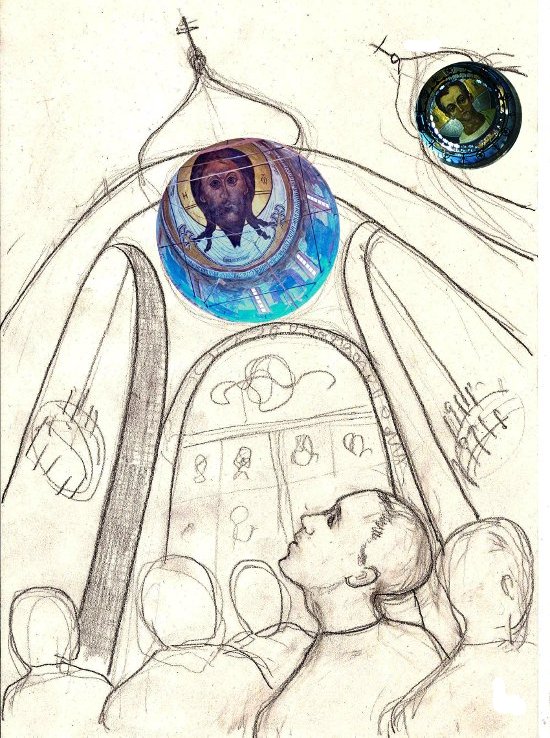
Notes from Peru (2). Inka stonework.
When you see an inka building, the first thing that strikes you is the inward slope of walls, a feature that made buildings earthquake resistant. If I were peruvian, I would register a patent for a “Lego” trapezoidal bricks. Simple buildings are made of small stones without polishing, nobler ones use carefully cut uniform stones.
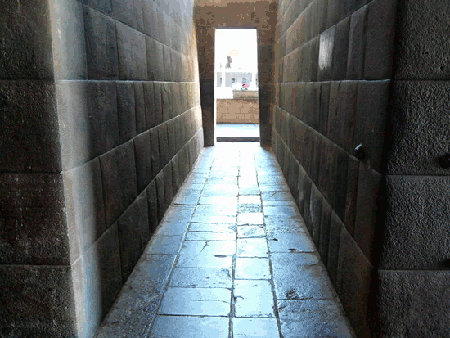
And sometimes, and this is what caught my interest, all the stones are different, maintaining their original form, they have been polished just to match perfectly with their neighbours. The result is of exceptional beauty and originality and as far as I know, unique. Stonemasons do not cut stones into uniform blocks, they have find out how to place them in order to fit without altering them very much. They do not supply like uniform brick blocks, but rather unique pieces, sometimes almost sculptures. We don’t have like a lego set here but a 3D puzzle. And again, if I were peruvian I would register a patent for a wall scale model.
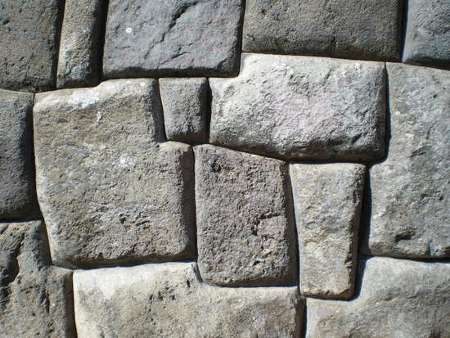
These walls and stones could be a beautiful metaphor about the group and the individual, the whole and its parts, in the sense that, in order to contribute to the general structure, there is no need to cancel the individual particularities, just to adapt a little. Small stones are not discarded for not reaching the standard size of a block, bigger ones are not fragmented in order to obtain uniform blocks. The inka stonemason tries to respect the natural size and shape of each stone.This attains the category of the sublime in some parts of the Machu Picchu complex where it seems precisely that the artist “reads” and “interprets” the form of the rocks and, with some kind of dialog, complements them, as in the Sun Temple or Condor Temple.
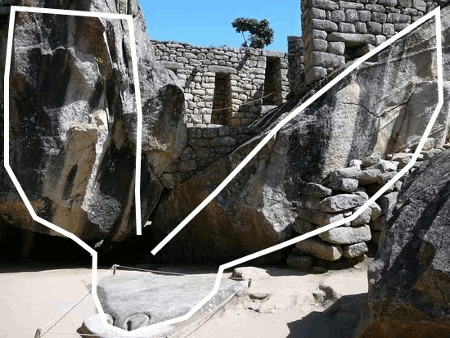
This “reading” of the natural form and the respect for her implies that symmetry has little or no importance at all. It’s worth admiring an obelisk, a column, a pyramid, but it is hard to overcome the elegance and originality of the Intihuatana Stone in Machu Picchu, which besides its astronomical and ritual functions is in itself a superb work of art. We won’t find a similar abstract expressiveness until 500 years later in some works of Eduardo Chillida or Henry Moore.
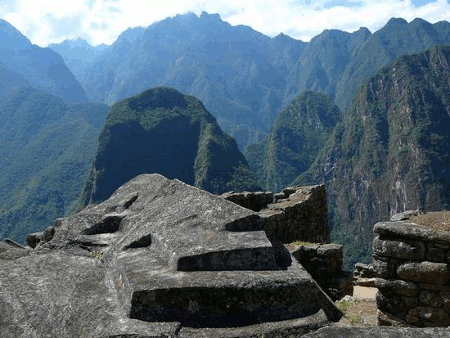
Notes from Peru (1). Qorikancha’s altar
If one visits the Convento de Santo Domingo in El Cusco, Peru, one will find the remains of the ancient Temple of the Sun (Inti kancha) or Gold Temple (Qori kancha). Besides admiring the walls built by the Inkas, there is a copy of the sketch of the gold panel over the altar, drawn by Joan de Santa Cruz Pachacutic in 1613. This panel depicted in a concise way the andean cosmology.
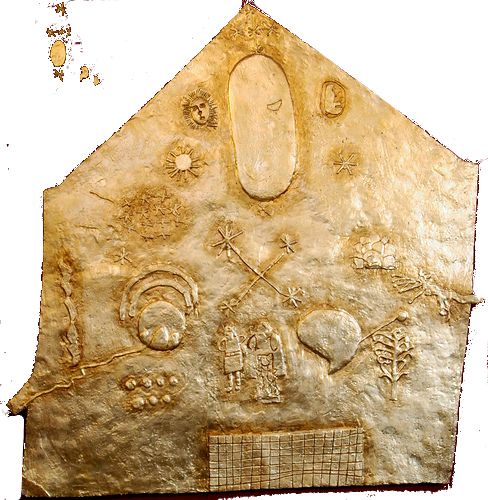
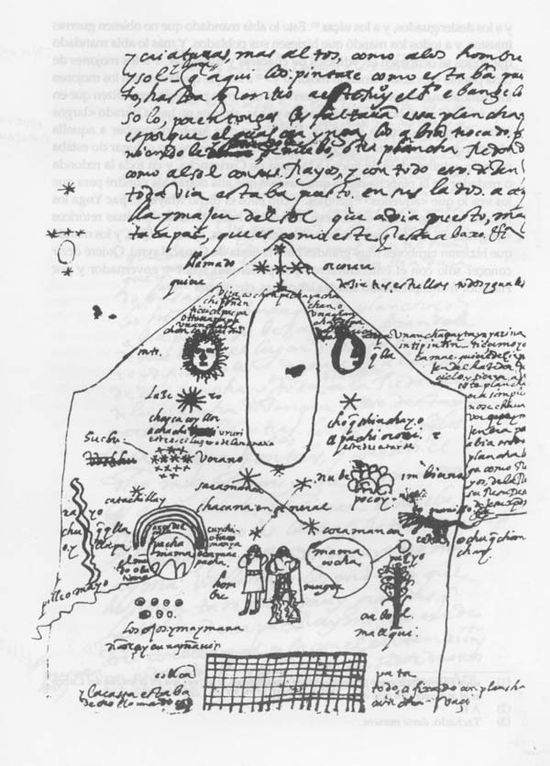
It is remarkable how everything was included: between two constellations, the sun, the moon, the evening star and the morning star, there is an ellipse representing Viracocha, the god demiurge that assembles the universe. Below there is the normal world and some sources of change: The seasons of the year, summer symbolized by a group of stars (perhaps the Pleiades) and winter with clouds, meteors like lightning at left and hailstorms at right associated with the small feline quwa. Mother earth “Pachamama” (still today many people perform the rite of burying some coca leaves, part of snacks, or spill the first drops of a drink, as a tribute), is under a rainbow, it has a river and “Apus”, sacred mountains; at its right the symbol of the primordial ocean encompassing everything. At the center, man and woman, at their left “the eyes of all kind of things”, as seeds or energy inside the earth that are the origins of all living beings. At right, a tree symbolizes the ancestors. The grid at the bottom corresponds to the faring terraces.
I wonder what would we draw if we had to illustrate our view of the universe in one of the main buildings of our city today.
The idea of a god creating and ordering things has been substituted by a universe expanding since the big bang. In a remote corner of that universe, and by a very unlikely chance, matter has changed to become complicate structures, living things that have evolved until a species that can speak. Our life still has the influence of the seasons and weather, but it depends also on absurd economic cycles, or what becomes fashionable. So, in that modern version of the Qorikancha altar, besides the agricultural seasons, there would be too screens showing the stock exchange index, CNN news, the most viewed at Youtube, the items most searched for in Google. Poor “mother earth” is not in very good condition, its resources almost exhausted, global warming, dump and waste …
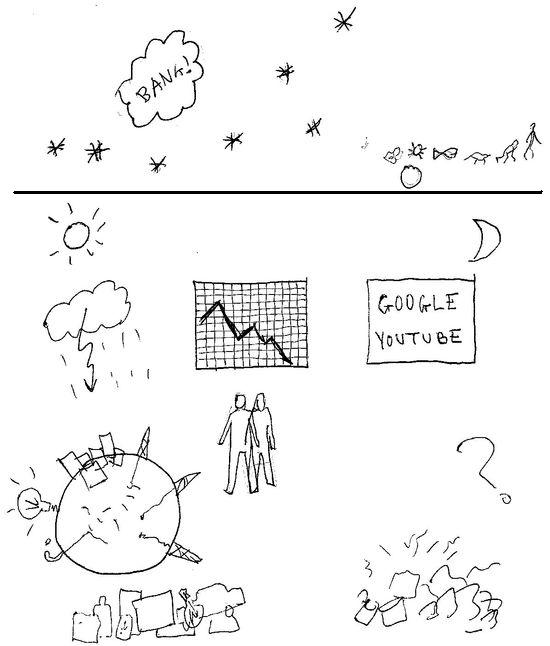
The “Suau”, a singular drink in a global, uniform world
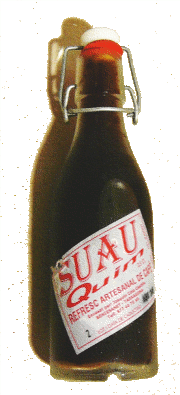 Globalization has its advantages but it leads necessarily to a certain uniformity. Wherever we go we find the same fashion brands, the same pasta, shawarma, tapas or sushi dishes. There are still differences as far as wines, cheeses or charcuterie is concerned but it’s hard to find something new in refreshing drinks (except local beers in central Europe).
Globalization has its advantages but it leads necessarily to a certain uniformity. Wherever we go we find the same fashion brands, the same pasta, shawarma, tapas or sushi dishes. There are still differences as far as wines, cheeses or charcuterie is concerned but it’s hard to find something new in refreshing drinks (except local beers in central Europe).
It’s hard but not impossible! In river Ebre country, in the south of Catalonia, and more precisely, inBenissanet, Móra d’Ebre and Móra la nova, I recently “discovered” the “Suau Quim”, a drink made out of coffee, sparkling water, sugar, and something else that gives it a very characteristic flavour. This beverage used to be quite common in Catalonia 100-30 years ago, and many aged people still can remember it. But it has been unavailable for some decades. Although in catalan “Suau” means “soft”, it seems that the name of the beverage is related to “Zouve”, the french infantry soldiers recruited originally between members of a berber tribe in “Zwawa”, Argelie. Some of you will remember apicture from Van Gogh.
The drink is a nice surprise, it refreshes and stimulates. It’s a new combination of older elements: first you have the familiar sensation of sweet sparkling water flowing over your tongue and gorge, and just after that comes a coffee flavour and something else (perhaps vanille? Cinnamon?). So, it’s something newer and more original than the cokes we are used to, but at the same time it evokes something more basic and traditional. The siteIlercavonia about Ebre country mentions the beverage factory of Juan Solé (“Saurí”) that operated in Móra d’Ebre from 1890 to 1983, producing the “sparkling sirop Zuavo” among other refreshing drinks and liquors. Today Joaquin Cots in Benissanet has reintroduced this new-old drink. The “Suau” distribution it’s still very limited, it is very hard to find in cities other than the few mentioned above. There are many reasons to visit Ribera d’Ebre . Tasting the “Suau” is one more.
Japan
Last April I went there.
Fascinating, diverse … and not expensive.
Useful links for those going on their own.
Itinerary planning
Japan | Frommers.com, helps to establish priorities if your time is limited.
Japan Tourism website, with excellent PDF printable guides.
Our itinerary (15 days): Tokyo, Nikko, Hakone, Takayama & Ogimachi, Okayama & Kurashiki, Hiroshima, Matsuyama, Imabari & Shimanami cycling, Takamatsu, Himeji, Koyasan, Osaka, Nara, Kyoto.
Transport
Jalpak The best flights I’ve found and they can get you the japan rail pass
You will need the timetable to plan your trips inside japan.
You won’t need this, but for rail lovers it contains pictures of all stations for all the lines.
Accomodation
Japaneseguesthouses.com : Traditional japaneses hotels aka Ryokans and Minshukus. I strongly recommend to spend some nights in one of them provided you can arrive early enough to take a bath before dinner (usually excellent) at 6. Reliable website.
http://www.japanhotel.net/ Comfort hotels at a very reasonable price. Reliable website.
Other
For cycling lovers Shimanami route, 70 km between Honshu and Shikoku, bridges over the Sea connecting islands.
Kabuki Theater. Be brave and give it a try, what is as traditional as Noel Coward for japanese ears will be as advanced as the most vanguardist contemporary music like Ligeti or Boulez for yours.
Budget
Flights Barcelona – Japan: 700-900 €
two week Japan Rail Pass: 300 €
Accomodation: 60-100 € double room/night
Meals: 7-15 €
